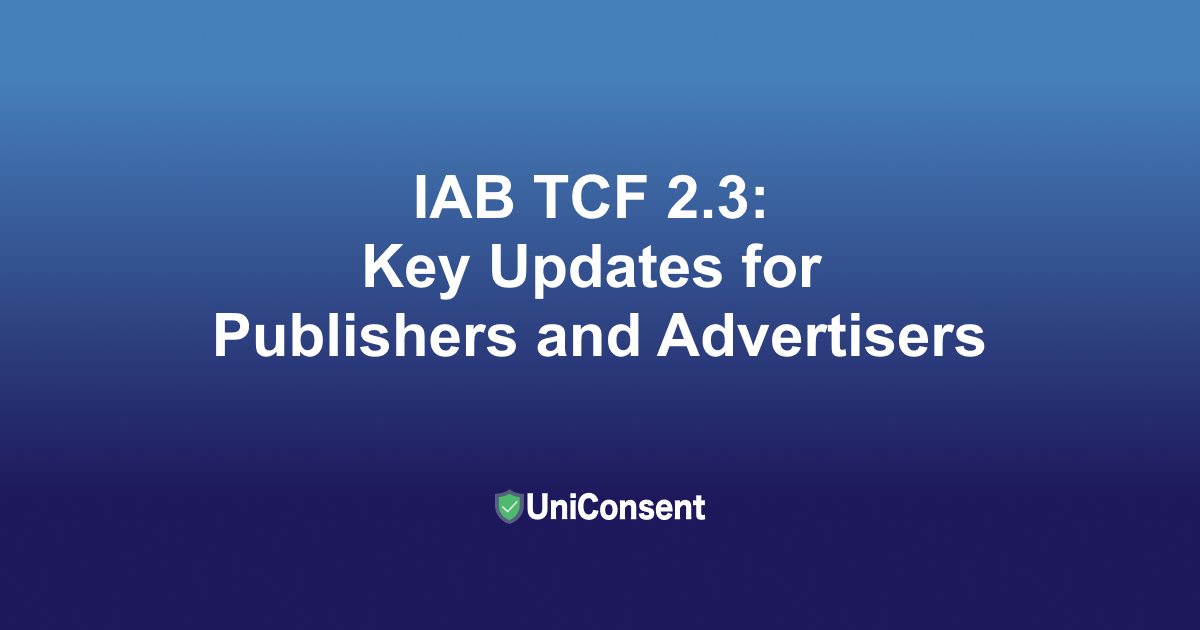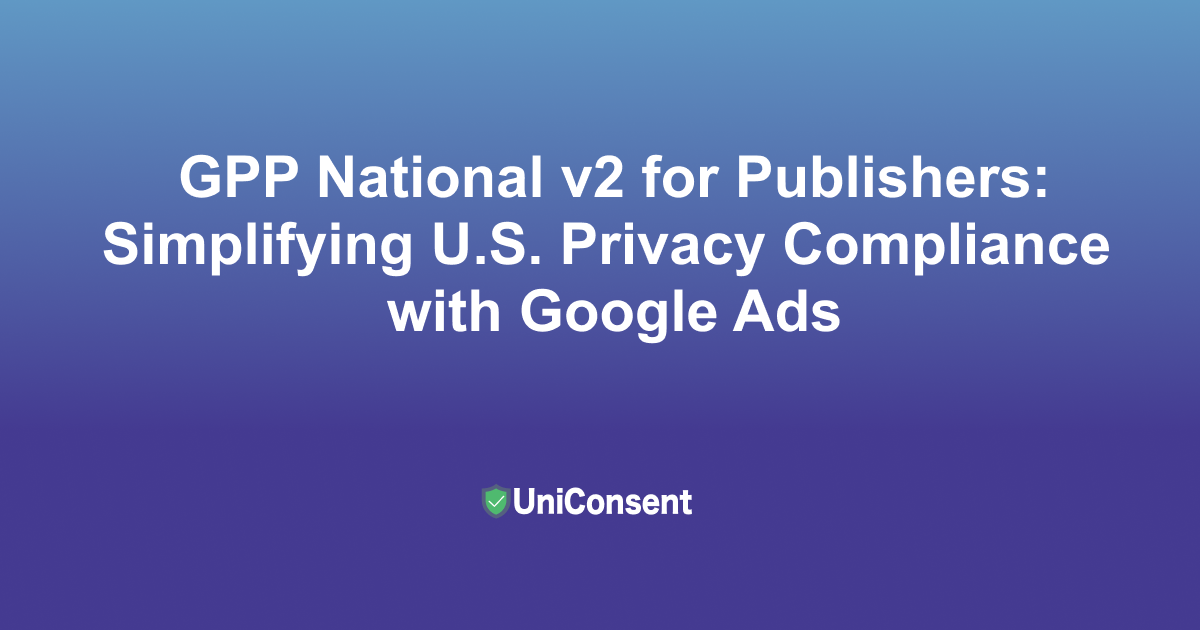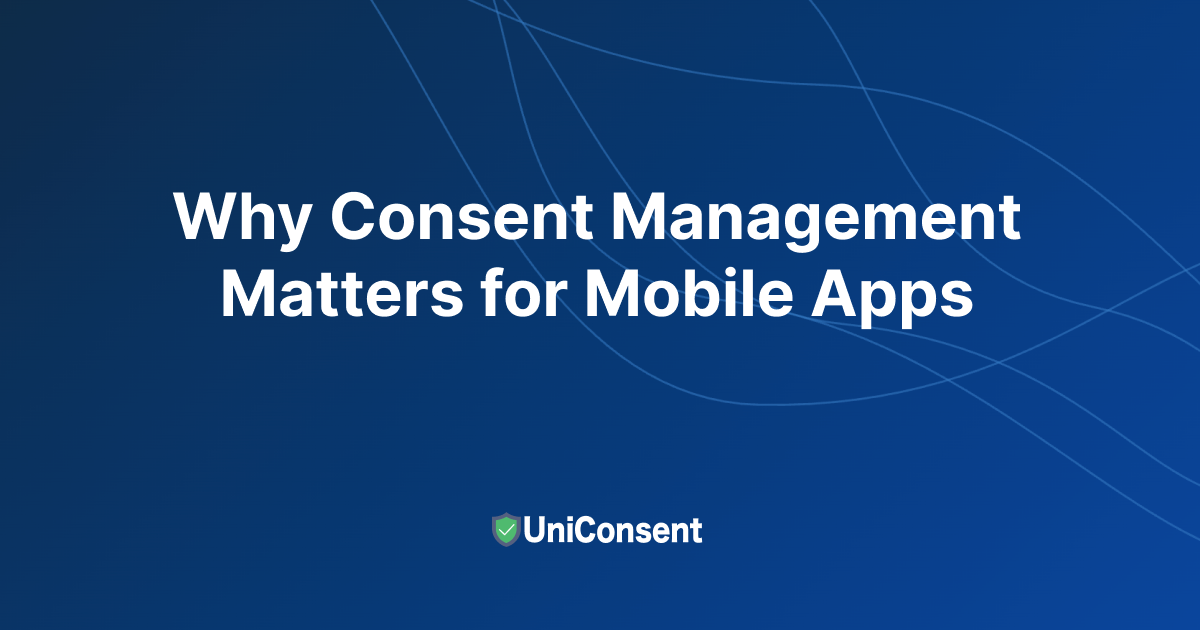CMP for AMP: How UniConsent Consent Manager for AMP works
UniConsent
Table of contents
UniConsent is a universal consent manager with support for many ad-vendors and consent solutions. UniConsent was one of the first vendors to fully support AMP content, allowing publishers to easily comply with data regulations around the world.
 How UniConsent Consent Manager for AMP works
How UniConsent Consent Manager for AMP works
What is Google AMP?
A different, faster, simplified way to access articles, content around the web and information from many websites. Google AMP stands for Accelerated Mobile Pages and focuses on speeding up the web for mobile devices. AMP allows publishers to enable their content to be displayed via Google AMP, a hosted, simplified and quicker version of a publisher's main website where they have posted content.
The basic idea is you would allow Google AMP to show your website content on search results through Google, then when a user clicks on your content, instead of being directed to your website, a user will see a simplified, stripped down version of your content, which is hosted by Google.
Now we have an understanding of what AMP is and what it is used for, let’s dive into more details, why it's good, why it's bad and how it works with UniConsent CMP for AMP.
AMP’s strategy and Google’s Goals
The aim with AMP is to speed up the web for mobile devices, AMP does not work on the desktop. AMP reduces what can be shown through AMP pages, this means minimal HTML, CSS and basically no JavaScript as the loading of scripts slows down a page.
However, Google does still require some of its own JavaScript to run an AMP page, so it's not the fastest by design.
It could be said that AMP only benefits Google the most as it means Google keeps control of serving content through their network and the content is only optimised/indexed for Google platforms only, basically a content lock-in. By using AMP, you lose a lot of control over your content, such as analytics, page structure, branding and identity because most content looks the same.
Google is by and large, an ad-driven company and by promoting something like AMP and getting more publishers to use the platform, they gain control over content and can optimise it for their search, discovery and the most importantly, advertisements. Because content is king on the web and Google wants a way to control and distribute it.
The Good Side of AMP
The idea of accelerated web pages for mobile devices and optimised content sounds like a good idea doesn’t it? - Google AMP brings a lot of good things to how we consume content across the internet with mobile devices, let’s go over some of the major advantages AMP brings:
Speed
The main goal of AMP is in the name itself, to speed up web pages and content for mobile devices. A lot of the time websites are designed for the desktop first and mobile design comes second. A desktop version of a website contains a lot of logic and content and to shrink all that down to fit within a mobile environment can take a toll on performance and usability.
Google AMP’s main goal is to speed up content for mobile devices, so how does it do that? AMP will take a website's original content and direct the user to a Google hosted version of that content (article, blog, report, tutorial etc.) and serve it in a stripped down approach.
A fully featured website will usually have a great deal of HTML, CSS and JavaScript assets and they all take time to load, especially if some assets are from other servers or CDN networks. Usually large publisher websites have no problem with loading heavy website content but mobiles suffer, sometimes the content is just not designed for mobile platforms, that’s what you get when you design for the desktop first.
By allowing AMP to serve your content, it will only load what is necessary and won’t allow any custom JavaScript - the biggest culprit of slow web pages. You also have other restrictions on the amount of CSS you can include as well, you will have to use AMP only components and content is hosted on Google's network but this is how you gain access to lighting fast loading times and responses.
AMP provides an accelerated platform for your website content to run on, allowing a publisher to focus on their content and not have to worry about slow performing websites and take advantage of Google's global network. And with all that in mind, better loading performance usually sees a lower bounce rate because users are not stuck around waiting for a page to load.
Elegant and Unified Look
Content is king and that’s what users care about and want to see. Google AMP displays content in a simplified way, cutting down on annoying adverts, making them more subdued, which keeps users happy and the experience very pleasant.
You are still able to run advertisements and get paid for the content that users view as AMP integrates with all the other Google Ad technologies and analytics. But AMP will display adverts to the users in a less intensive, more respecting manner, as viewers don’t like to see annoying popup ads or massive banners. AMP keeps all this subtle, which usually increases your click through rate and engagement on your content.
You may lose control over page structure but at least AMP displays your content in a user friendly manner while still being able to show adverts. AMP is focused on user-first mobile HTML pages.
AMP also supports a wide range of content which can be simplified down for user consumption. It’s all about getting your content in front of your audience in a fast, simplified manner and that’s what drives clicks and sales for publishers.
Increased Visibility For Publishers
Publishers can increase their visibility by taking advantage of how AMP presents content to potential users. Mobile use continues to rise throughout the years so it's ever so important to get content in front of users sooner, without having to even visit a website directly.
That is why AMP is vital for publishers to tackle the mobile platform, AMP enables a publisher to display their content in AMP carousels, these are displayed before any website links within Google Search, so you can see how important it is to take advantage of this. While AMP doesn’t directly affect search ranking, it can get your content to your users faster than normal website links in Google Search.
And with Google Search being one of the most used search engines, it is extremely beneficial for publishers to get their content enabled with AMP and carousels.
Open Source and Community
AMP is an open source project, started around 2015 at Google, so it has good enterprise backing and a large community. Over 1,000+ developers from around the world and from companies like Twitter, Pinterest and Yahoo contribute to the project, helping improve AMP for the better.
Not long after AMP was launched the project was transferred to the OpenJS Foundation, making it easy for anyone to join and shape the future of how AMP works. It is the foundation of an open web backed by Google, giving the opportunity for any publisher to support a user-first platform with their content.
Increased Ad Views
Because of how AMP is built, it uses special HTML tags which enhance the overall usability of the ad banners and images. AMP optimises the content around the adverts in a more efficient way, increasing the length and number of adverts your users will potentially see, especially if they stay on your content for longer through the other added benefits of using AMP.
Through the use of optimised HTML, there is no chance of your content being slowed down by the web page. Getting adverts to load faster and in front of your audience quicker, directly reducing the bounce rate as well.
The Bad Side of AMP
Google AMP changes a lot for the mobile web platform and it's taking over more and more, especially with the direct backing of Google and its Search Engine. It’s benefits to publishers can be huge but does it suit everyone? - AMP has its benefits but also might not be for everyone. Let’s go over some of the disadvantages and why some may be against its use:
Brand and Domain Disassociation
The biggest takeaway by using AMP is the publisher will lose some of its control over branding and structure. AMP aims to improve usability and readability of web content but that comes at a cost. Content on AMP is reduced down to its simplest form and displayed to the user in a minimalist style, all in an attempt to increase ad revenue and keep users engaged with the content. This is all great for publishers and Google but you do lose the ability to style, brand and structure your content how you want. There are some ways to control your branding or change the structure but you have to use AMP’s framework and way of doing things.
By giving up domain control and branding, it could dilute your brand identity and you won’t be able to achieve the same brand styling if you just led users to your actual website. You end up letting AMP fork your content to display it outside of your own platform.
Limited User Experience
By using AMP and by having to abide by its styling and structure standards, you sacrifice a significant amount of UX elements on your webpage. At its core, AMP HTML prioritizes efficiency over creativity, so if engaging visuals is a big part of your web experience, this may not be for you.
AMP enabled pages also don’t allow the use of forms, so if you want to engage with your users or ask for them to join an email newsletter, you won’t be able to. Another limiting factor for users viewing your content.
If you don’t set up AMP correctly, sometimes when viewing AMP content, images can go missing, meaning users might not be seeing what you expect them to see and you risk losing them. Again, this is the massive issue with AMP, you don’t get control on what is displayed all of the time.
Not all Ad-Vendors Support AMP
Header bidding is a way websites can auction off ad space to many ad-vendors at once. It allows publishers to get better prices for the space they want to sell off.
However, header bidding is only possible by loading additional JavaScript into a publisher's webpage. And AMP does not allow additional JavaScript on AMP enabled pages. So you cannot sell off ad space as you usually would on your website, leaving a publisher unable to do anything about it.
A ad-vendor and publisher lose the freedom to insert and use any ad-vendor they want, all ads are served by Google when using AMP. There is the possibility to become a certified vendor but that is an additional step controlled by Google and some advertisers may not be able to support AMP ad-vendor requirements.
Not Good For Independent Publishers
For smaller publishers Google AMP is probably not the best idea. Brand identity is very important, engagement through specific UX elements is lost with AMP and control over vital ad-space has to be given up, these are all important factors for independent publishers.
While AMP can speed up content on mobile and reduce server requests by 77% for publishers, if the content is not implemented properly, sometimes AMP content won’t display correctly, potentially losing users and views. Some independent publishers may not have specific experts around to monitor this all the time, they will probably want to spend their time creating more content.
You cannot use email popups or CTA (Call to Action) buttons to engage with users, which could be important for smaller independent publishers wanting to grab the users attention or offer email newsletters or special offers.
AMP mainly supports Google Analytics for web traffic metrics and not all publishers are using it, they may have their own homegrown solutions or be using another analytics platform and not all support Google AMP. So it may not be an easy task for independent publishers to support/switch over to AMP enabled content.
Using AMP encourages users to divert back to the Google Search results rather than your own website, which is not very good for user retention or session duration if you had just led users directly to your website in the first place.
Should publishers support AMP?
Overall AMP aims to improve website performance, usability and readability of a publisher's content but you pay the price of allowing Google to keep your users on their network and under Google’s control. Most of the time that can be a bad thing because a publisher loses control over what the user sees and AMP doesn’t allow custom JavaScript, so there is no chance to control the UX/UI of your site.
Depending on the size of the publisher, it makes sense for large businesses to enable AMP content as they already have their brand identity and would probably rather come out on top of AMPs carousels. Whereas, an independent publisher probably wants to retain its brand identity more and have better control over user engagement and ad-vendors, as not all are supporting AMP.
Smaller publishers can easily optimise their content for mobile devices while still being able to achieve respectable loading times, while not as fast as AMP loading times, it is still possible to achieve what AMP offers without it (excerpt for getting into Google search results); allowing a publisher to keep full control of their content and ad-vendors.
UniConsent and Official AMP Support
UniConsent is a universal consent manager with support for many ad-vendors and consent solutions. UniConsent was one of the first vendors to fully support AMP content, allowing publishers to easily comply with data regulations around the world.
Even though AMP is a stripped down version of a webpage’s content, there is still the chance to show adverts or set cookies, which still requires a consent modal/manager by law in some countries under some laws like GDPR or CCPA etc. That’s where UniConsent comes in useful, you can use UniConsent as a cookie manager within AMP and manage consent signals to different ad-vendors.
Conclusion
Google AMP has been around since 2015 and has changed along the way, integrating with more ad-vendors and changing features for the better (or worse) but still keeps its core value of speed and usability. It comes down to what level of control a publisher really wants and what UX they need to display for their viewers. Over time Google AMP has been proven to earn near the same amount of ad revenue as a full scale mobile website, so for large publishers this is very attractive but for smaller publishers, it may not be the way due to brand identity being lost and limited control over user experience and engagement.
UniConsent will continue to support AMP and integrate with all the other Google Ad-tech platforms, making it easy for publishers who support AMP to provide proper consent management for their users, making it easier for publishers to transition over to AMP enabled pages.
About UniConsent
UniConsent is a part of Transfon User Experience Platform serves tens of millions of users per day to provide a seamless privacy experience for both users and publishers in the age of post GDPR. Contact us to know more: hello@uniconsent.com
Leading Consent Management Platform
Compliant with GDPR, CCPA, COPPA, LGPD, PECR, PDPA, PIPEDA, and more.
Activate Google Consent Mode UniConsent to enhance the accuracy of your Google Analytics and Google Ads conversion data.
Set up Google Consent Mode →Get started to make your website and application compliant for EU GDPR, US CPRA, CA PIPEDA etc
Sign upConsent Management Platform Resources

VanityFair France Faces €750,000 Fine for Non-Compliant Cookies
UniConsent CMP is Certified as an App-Ready Partner of Google

IAB TCF 2.3: Key Updates for Publishers and Advertisers

GPP National v2 for Publishers: Simplifying U.S. Privacy Compliance with Google Ads
Maximize Google Ads ROI with Consent Mode Support from UniConsent

Why Consent Management Matters for Mobile Apps in 2025
Get started to make your website and application compliant for EU GDPR, US CPRA, CA PIPEDA etc
Sign up